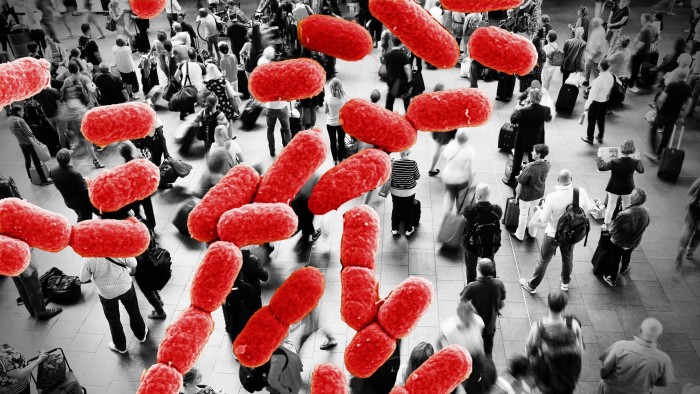Stay informed with free updates
Simply sign up to the Science myFT Digest — delivered directly to your inbox.
Scientists have raised the alarm about the potentially existential threat of “mirror life” — manufactured bacteria that are structural reflections of natural microbes and could overwhelm the defences of people, other animals and plants.
An international group of almost 40 researchers, including two Nobel laureates, warned on Thursday that such synthetic organisms might “pose unprecedented and largely overlooked risks to much of existing life”.
The stark message highlights how advances in synthetic biology that have helped drive big health breakthroughs could one day have the capacity to generate deadly new organisms by accident or design.
“If robust mirror bacteria were created and released into the wild — or escaped from containment — the result could be catastrophic, irreversible damage,” said Jack Szostak, a professor in the University of Chicago’s chemistry department and co-winner of the 2009 Nobel Prize for physiology or medicine.
“It could be far worse than any challenge we’ve previously encountered — and far beyond our capacity to mitigate.”
Mirror life would be the “ultimate invasive species”, said Michael Kay, a professor of biochemistry at the University of Utah. “There’s a very reasonable risk that this could overwhelm all the natural defences in both the body and ecosystems,” he said.
Mirror organisms would “constitute a radical departure from known life and their creation warrants careful consideration”, Szostak, Kay and the other researchers write in an article published in Science. The scientists call for international action to decide how to deal with the possibility of mirror life, before technological breakthroughs make it feasible.
Their fears centre on a scientific phenomenon known as chirality, or handedness. Chiral forms of molecules have the same chemical composition but they are not structurally identical because they are mirror images of each other — like human hands.
The cellular machinery of existing living things would not be able to deal with mirror microbes because they are not adapted to do so, the researchers argue. Mirror bacteria could therefore evade many organisms’ immune defences, “potentially causing lethal infections in humans, animals and plants”, the article says.
Some of the authors have concluded the threat is substantial in part because of their research developing nonliving mirror image biomolecules. These synthetic structures could be effective stealth agents against pathogens such as HIV, precisely because the body’s natural defences will not be able to destroy them.
But the leap from making useful mirror molecules to manufacturing mirror bacteria “cannot be justified by the relatively limited potential benefits”, the Science article authors write.
Mirror organisms might be used as bioweapons but the far bigger risk is of an accidental leak from a lab into the environment, scientists say. Many existing drugs would probably be ineffective because — like the human immune system — they are designed to combat microbes’ natural forms.
Vaughn Cooper, microbiology professor at the University of Pittsburgh, said his first reaction when invited to back the Science article warning was “incredulity that mirror life could be dangerous”. He changed his mind after looking at the rapid growth of enabling technologies, which led him to estimate the creation of viable living mirror cells might be just 10 years away
“Fortunately, we have time collectively to develop guidelines and hopefully place co-ordinated global limits on certain types of enabling technologies,” he said, adding that investing in countermeasures to mirror life was “essentially pointless”.
“It’s impossible to inoculate the planet against mirror bacteria because they would be invisible to our immune systems,” he said. “All forms of life would be affected, either by being infected or outcompeted by them.”
The mirror menace comes as authorities grapple with the task of keeping up with regulation of the fast-expanding possibilities of synthetic biology, boosted by artificial intelligence. The authors of the Science article urge consideration of models such as the Tianjin Biosecurity Guidelines drawn up in 2021 by leading international research institutions.
A crucial element of the mirror life conundrum is the discovery in the past few years that the common bacterium E. coli can grow by consuming food sources that do not have a specific handedness. This overturned previous beliefs that mirror bacteria would be fundamentally unviable because they would be unequipped to eat the chirally-specific foods that normally sustain their natural counterparts.
Mirror microbes might still be hampered by restrictions in the food they could eat but the overall potential threat remained grave, said Professor Eörs Szathmáry, an evolutionary biology professor at Eötvös University in Budapest, Hungary.
“Mirror bacteria could do a lot of harm,” said Szathmáry, who was not involved in the Science paper. “If they escape from a lab, a terrible surge of infections could happen.”
Read the full article here

